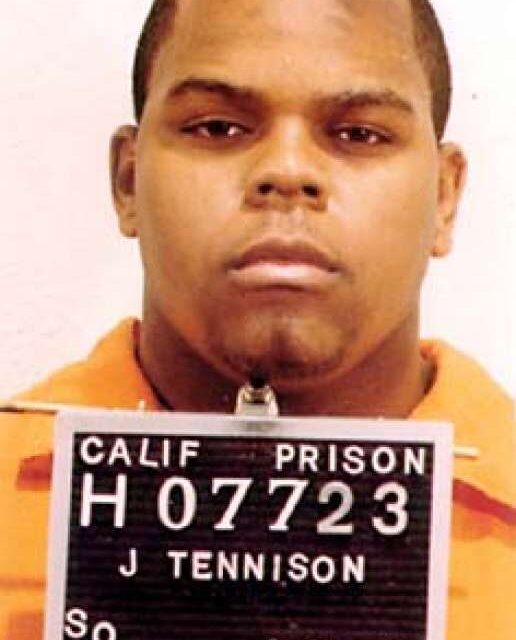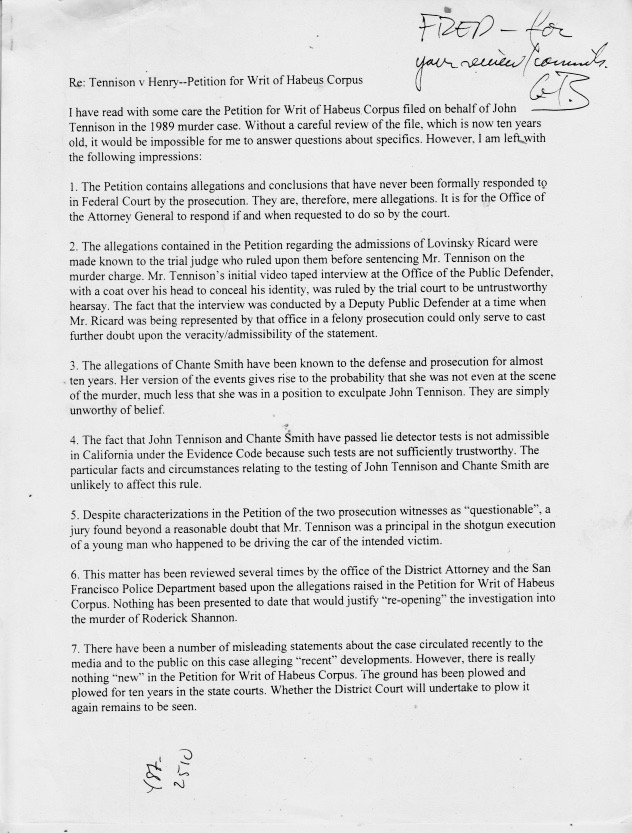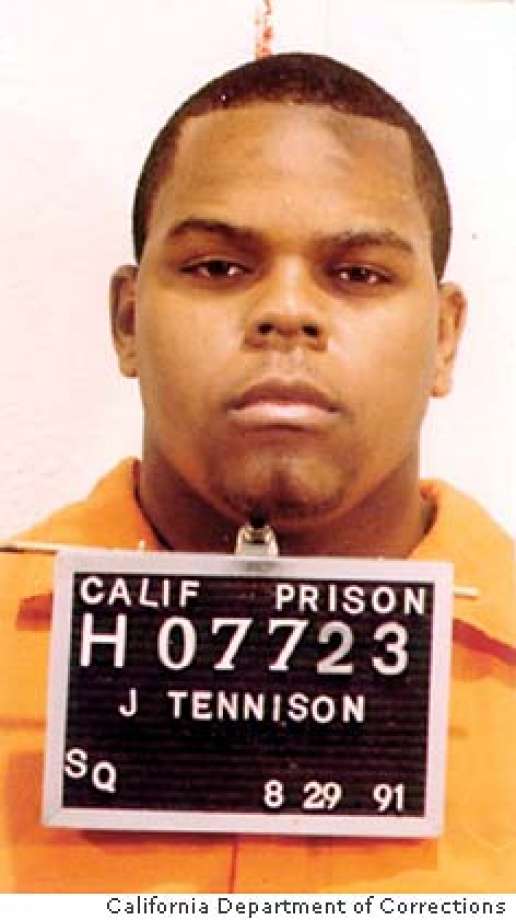My put-down of George Butterworth, the head of gang-related prosecutions during Terence “Kayo” Hallinan’s eight years as San Francisco District Attorney, drew a response from AVA reader Jim Miller, a retired SFPD officer. Butterworth “worked hard at prosecuting gang cases,” Miller wrote. “He took his work seriously and was skilled.” Miller also noted that the array of inmates’ photos on Butterworth’s bulletin board was not unique at the Hall of Justice. (I had been appalled by their 100% brownness.)
In November 2003, a year after I retired as Hallinan’s press secretary, SF voters chose Kamala Harris to replace him. When she took office she asked two respected civilian lawyers to vet Butterworth’s role in the 1991 prosecution of J.J. Tennison and Antoine Goff, young bloods who had been convicted on murder charges and imprisoned for more than 12 years before a federal judge reviewed the record and ordered them released. Based on what the civilian lawyers learned (or didn’t learn), Harris retained Butterworth’s services. In 2006 she put him in charge of Homicide prosecutions, a prestigious post.
The ace reporter who covered the Hall of Justice for the Chronicle, Jaxon Vanderbeken, recognized the significance of Butterworth’s de facto promotion and wrote about it. He quoted veteran homicide prosecutor Al Giannini, who called Butterworth “a brilliant choice… He has more knowledge in the Bayview (sic) than anybody in the office. He has the respect of the Police Department. He has worked closely with federal law enforcement agencies.”
For sure Butterworth had close ties to the cops and the feds; but how much “knowledge” did he have about the lives of people in the projects? I took another look at the detailed memo he had written in 2000 when reporters started inquiring about Tennison and Goff. The two men were still in prison, convicted of a murder another man had confessed to, and still proclaiming their innocence. Butterworth’s 7-point memo was devoid of empathy. It reminded me of the dress-right-dress array of inmates on his bulletin board.
As far as I could tell, Butterworth’s vaunted “knowledge” of the Bayview district was limited to the organizational structure and leadership of various gangs. J.J. Tennison was just another brown-skinned man in an orange jumpsuit on his wall.
At the Hall of Justice I got to know cops and prosecutors with real experience and understanding of life in the projects. I met others who commuted in from Novato and whose “knowledge” of life in the urban ghetto was, at best, pop sociology. For example…
“Police Blame SF Killings on Rap Gang War” read the titillating headline on a May 5, 2000 Chronicle story. The news hook was Inspector Kevin  Whitfield’s announcement that an investigation by the SFPD Gang Task Force had determined the cause of the recent spate of shootings. “It all started over the music,” according to Whitfield. “It was over who was putting out the best music, who was putting out music first. Then it became about Big Block felt disrespected in music by members of Westmob.”
Whitfield’s announcement that an investigation by the SFPD Gang Task Force had determined the cause of the recent spate of shootings. “It all started over the music,” according to Whitfield. “It was over who was putting out the best music, who was putting out music first. Then it became about Big Block felt disrespected in music by members of Westmob.”
Deputy Chief Rich Holder (a Black man) was quoted repeating the contemptuous SFPD line: “They are beefing over music issues.” The Chronicle reporters, Vanderbeken and Jonathan Curiel, repeated the line for them: “Police have added patrols and formed a task force to calm the southeastern part of the city. They said people are dying because of feuds over who is the most talented rapper, who is selling the most CDs, and who is being insulted in songs.”
The reporters supplemented the “Rap Gang War” storyline with some relevant background: “The fight is between successors of gangs that have long clashed over turf and the drug trade.” As they knew but didn’t emphasize, mighty Westmob and fearsome Big Block each comprised about 20 desperately poor teenagers and unemployed young adults who had been vying for street corners on which to sell weed and crack. These men —called “gangbangers” by the cops— dreamed of buying studio time so their talented friends could record. The tragic violence wasn’t about music, it was about money! Or, to be more precise, it was about the lack of money. The enduring poverty of the ghetto.
Inspector Whitfield of the SFPD gang task force shared two more bits of his dangerous, superficial expertise with the Chronicle:
• “Whitfield said the younger members of the groups are causing most of the problems. ‘The young generation of these record companies-gangs (sic), they are at a point right now where they really don’t care about anything,’ he said.”
• “Patrick Brown, 28, was shot to death Saturday at Third and Underwood Streets, and 25-year-old Kenneth Gathron died Saturday night at 111 Cameron Way. Both men were associated with the Westmob group, Whitfield said.”







